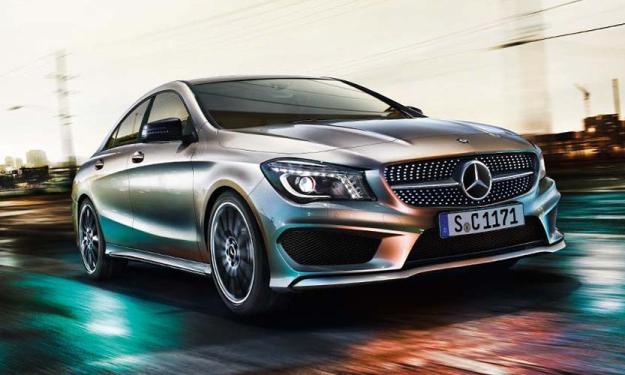 News that Garmin has been selected by Daimler AG as the global navigation provider for future Mercedes-Benz models could spur some interesting new technology in future vehicles.
News that Garmin has been selected by Daimler AG as the global navigation provider for future Mercedes-Benz models could spur some interesting new technology in future vehicles.
Building on Garmin’s award-winning user interface, over the next four years the navigation technology will be integrated into the Mercedes-Benz infotainment systems with a focus on providing to an “efficient and intuitive experience” for drivers, notes Garmin’s official press release.
In addition to displaying the typical navigation and maps on the in-dash display, users will have access to important driver information, such as the next turn, at a glance on a second display, positioned behind the steering wheel.
The Mercedes-Benz infotainment systems allow users to control navigation functions through the system’s rotary controller or via voice command.
Garmin’s next-generation navigation software will provide critical positioning information for Advanced Driver Assistance (ADAS) functionalities of the vehicle to assist drivers in challenging situations.
Garmin offers little detail about the “next generation” navigation system. But news of the company’s partnership with Daimler AG comes on the heels of an announcement of new traffic technology the company has developed for aircraft pilots.

The new Garmin systems, which include the GTS 825 Traffic Advisory System (TAS) and the GTS 855 Traffic Alert and Collision Avoidance System (TCAS I), offer improved performance and range features to provide pilots with the most comprehensive traffic picture possible, according to the company’s press release.
Each system has 400 watts of transmit power, and 40 and 80 nautical miles of “interrogation” range or 46 and 92 driving miles, respectively.
“Now with increased transmit power and range, the GTS series provides even broader situational awareness and allows the pilot to visualize more potential traffic targets that could pose a threat,” said Carl Wolf, Garmin’s vice president of aviation sales and marketing.
The GTS series is capable of creating a 360-degree zone of detection around the aircraft so pilots can see and identify targets in their airspace that may pose a risk. That kind of technology would definitely come in handy in a car to identify a “potential” traffic jam a state away during a road trip, or to warn a driver of a zone of state troopers waiting in a speed trap 40 miles ahead.
The GTS series products also come standard with Garmin’s patented CLEAR CAS technology, a hybrid system that provides real-time information that is totally independent of radar-based air traffic control. In the future, the system will be able to provide enhanced information about a target aircraft including flight ID, altitude, velocity and direction on select displays.
Imagine having that kind of in-car technology to gauge things like whether a cluster of drivers in a certain area might yield a greater potential for an accident by assessing data like vehicle accident reports and real-time erratic driving behavior.
Maybe it’s all just wishful thinking or me spending far too much time watching sci-fi movies considering the legalities involved and not knowing what if any modifications could be made to Garmin’s GTS series to make it adaptable for a car. But imagine what driving a Mercedes-Benz would be like if Garmin and Daimler AG could package some of that technology into the carmaker’s infotainment system.
Editors' Recommendations
- 2025 Mercedes-Benz EQS sedan gets new face, bigger battery
- In latest prank, BMW ribs Mercedes-Benz with a Halloween joke


